Learning Studio III: Emergent Technologies Project
Duration
1 Month (March-April 2020)
Contributions
Primary Research
Secondary Research
Prototyping
Usability Testing
Teammates
Yuqing Wu
Exploring Technology
We decided to look into Virtual Reality (VR) technology as we felt that we wanted users to feel immersed in an experience with their friends. When people like to hangout, they don’t always want to talk all the time, they want to do some sort of activity. The technology we looked into for inspiration was: Oculus Quest VR Headset and Playstation VR Headset and Move Controllers.
With these technologies in mind, we have decided to base our solutions to fit the VR platform and really introduce fun elements to things people would normally do with friends when they hangout.
Problem Statement: People who are experiencing social isolation alone due to the pandemic need to actively engage with online interactions
User Group: People who are currently living alone/only children.
Design Process
How we got to our final solution
Research: Interviews
Process: Before starting ideation and design, we researched the current experiences of only children and their day-to-day lives during the pandemic. Our goal was to understand how people interacted with others during social distancing and the issues they faced. We interviewed current college students who do not have roommates or are only children.
Interview Protocol Questions:
- Can you describe what your current practices are with regard to social distancing yet retaining connections you have with other people?
- What is some advice you’ve heard about how to socialize online that sounds reasonable, but isn’t working for you?
- How does the Covid-19 affect your hobbies that would require you to be at a different location?
- How does social distancing affect your relationship with others?
- How did you feel about social distancing during the first week?
- How do you use social media right now as a way to connect with people?
Insights: Here are the insights we got from the interviews: During the pandemic, youth experienced increased reliance on social media platforms such as TikTok, Instagram, and Snapchat, initial anxiety about the virus leading to continuous news checking, time allocated to online classes and digital communication, feelings of sadness due to missing in-person hangouts with friends, a mix of initial lack of motivation and opportunities for hobby exploration, utilization of video games and chat apps for social connection, anxiety about contracting COVID-19 disrupting schedules and leading to procrastination, efforts to sustain relationships through texting and video calls with close friends, and reliance on group chats for sharing interests and staying connected with friends.
Journey Mapping
Goal: Our goal is to identify the current emotional patterns users are facing and determine which areas in the map will help us come up with a solution.
Process: We created two distinct journey maps to depict the emotional patterns among our user group during social distancing. Our observation revealed two distinct emotional patterns experienced by our user group, making it illogical to create just one journey map.

From our first journey map, we observed that half of our interviewed users experienced a range of emotions from negative to positive during quarantine. In the initial week, they felt frustration, sadness, anxiousness, and loneliness, often resulting in procrastination, frequent news checking, and gaming. By the second week, boredom, fatigue, and disorganization prevailed, leading to binge-watching, increased social media use, and heightened family interaction. However, by the third week, they reported feeling balanced, calm, and in control, leading to increased productivity through learning new skills, exercising more, and reducing news consumption.
half of our users. Initially, during the first week of social distancing, they were accepting but slightly anxious about the new lifestyle. They maintained caution by constantly checking the news while spending time with family. By the second week, boredom and mild sadness emerged as they felt distant from friends and family, leading to news checking and a decline in motivation for online schooling. Moving into the third week, sadness and increased anxiety about leaving the house became prominent. They desired face-to-face interaction with friends, resulting in increased binge-watching and social media usage as they grew weary of online schooling.

Ideation and Narrowing Down
Process: Our primary objective for this project was to generate a multitude of ideas. We were assigned the task of sketching 50 ideas, aiming to narrow our focus on the project’s scope while also exploring possibilities for designing with VR technology.







In our initial ideation phase, we drew inspiration from interviews and secondary research, employing divergent thinking to generate numerous ideas within our problem scope. Our focus was on fostering collaboration and designing experiences that facilitate interaction among friends living alone. Some of these ideas included hosting an immersive movie premiere or watch party, exploring Google Earth together, having an augmented reality game night, and much more.
We eliminated ideas that were either outside of our problem scope or challenging to implement, and then iterated on the remaining concepts. After refining a few ideas with greater potential, we identified the final two that we believed had the most promise to advance to the next stage. Two of the ideas we ended up narrowing down to were:
- TV Series: We refined TV series ideas by incorporating more details about the interactive process and how viewers can engage within the show. Users can invite friends from their contact list from the outset, and during the show, they can explore the imaginative world together. What we appreciate about this concept is that it sparks conversations beyond mere catch-ups, offering a shared interest that brings people together. While there are more direct methods to connect, such as an AR video chatting app, we prioritized entertainment here, recognizing that boredom can lead to feelings of loneliness.
Sports Center: Inspired by a desire expressed by one of our interviewees to swim during social distancing, this idea is an expanded version that allows users to engage in various sports activities underwater with friends. We’ve broadened the scope to include football, soccer, badminton, baseball, and more. Users can choose between single-player mode or multiplayer mode to decide whether to play with friends. Our focus during the design process centered on enabling multiple players to join a private room seamlessly; once created, a private room generates an auto-generated code for easy sharing. We believe that physical interactions during sports can serve as a remedy for loneliness and boredom, making this concept particularly impactful.



Medium-Fidelity Mockups and Initial Testing
Process: After deliberation, we selected two ideas from the narrowed pool and developed mid-fi prototypes to provide clearer visualizations in Figma. We then conducted feedback sessions with our interviewees, guiding them through the prototypes via shared screens on WebEx and soliciting their opinions. Following discussions, we decided to iterate on the TV show concept, as the sports idea allowed for less communication with others. Subsequently, we refined the prototypes of the TV show app in Figma, finalizing the design.




Sports Center Feedback: Feedback on the Sports App included remarks such as finding it really interesting and neat, appreciating its uncomplicated nature. Participants commended the good interface and clear layout understanding, with one expressing personal interest due to their preference for multiplayer games. They believed it could help people feel like they are reconnecting with friends outdoors. Suggestions were made to include more games and ensure compatibility with other gaming platforms like Wii and Xbox. Additionally, while participants found the VR experience immersive, they inquired about considering more direct means of communication.
TV Series Feedback: Feedback on the TV Show experience included positive comments about the ability to embody characters, seen as appealing to movie fans due to its immersive nature, particularly liking the first-person view. Suggestions were made to allow interaction with characters beyond just friends and to explore the show’s world freely. Participants proposed incorporating side quests akin to games like Red Dead Redemption 2, though they found the interface somewhat confusing, they appreciated the concept of being transported to a different world. They found the idea conducive to casual exploration with friends. Overall, participants felt the TV show concept offered an immersive experience akin to being in a different dimension and appreciated the opportunity to explore shows of personal interest, particularly enjoying the choice due to their interest in movies and shows.







User Flow
Takeaways from Initial Testing: Throughout the entire process, voice chatting can always be activated. The microphone is a crucial component in our design, heavily utilized to address the issue of social isolation, as communication plays a critical role in expressing feelings and interacting with others. This design not only enables users to converse with their friends but also with NPCs in the show, enhancing interaction within the app to alleviate social isolation.
User Flow Structure: Here is the structure of the TV show app, divided into two phases: onboarding and the show itself. During onboarding, we prioritized simplicity to ensure a straightforward process. Users progress from selecting a streaming platform to choosing a show, sending invitations, and selecting characters. To enhance interaction during this phase, we incorporated the ability for users to talk to others and view their selections simultaneously while choosing characters.
The TV show section comprises the main story, side story, and exploration features. The main story allows viewers to enjoy the original episode, while the side story presents a special edition complementary to the main plot, offering a new narrative for those familiar with the show and serving as conversation starters. The exploration mode permits users to wander through the world, providing a casual setting for chatting with friends against diverse backgrounds.


Final Solution: Onboarding
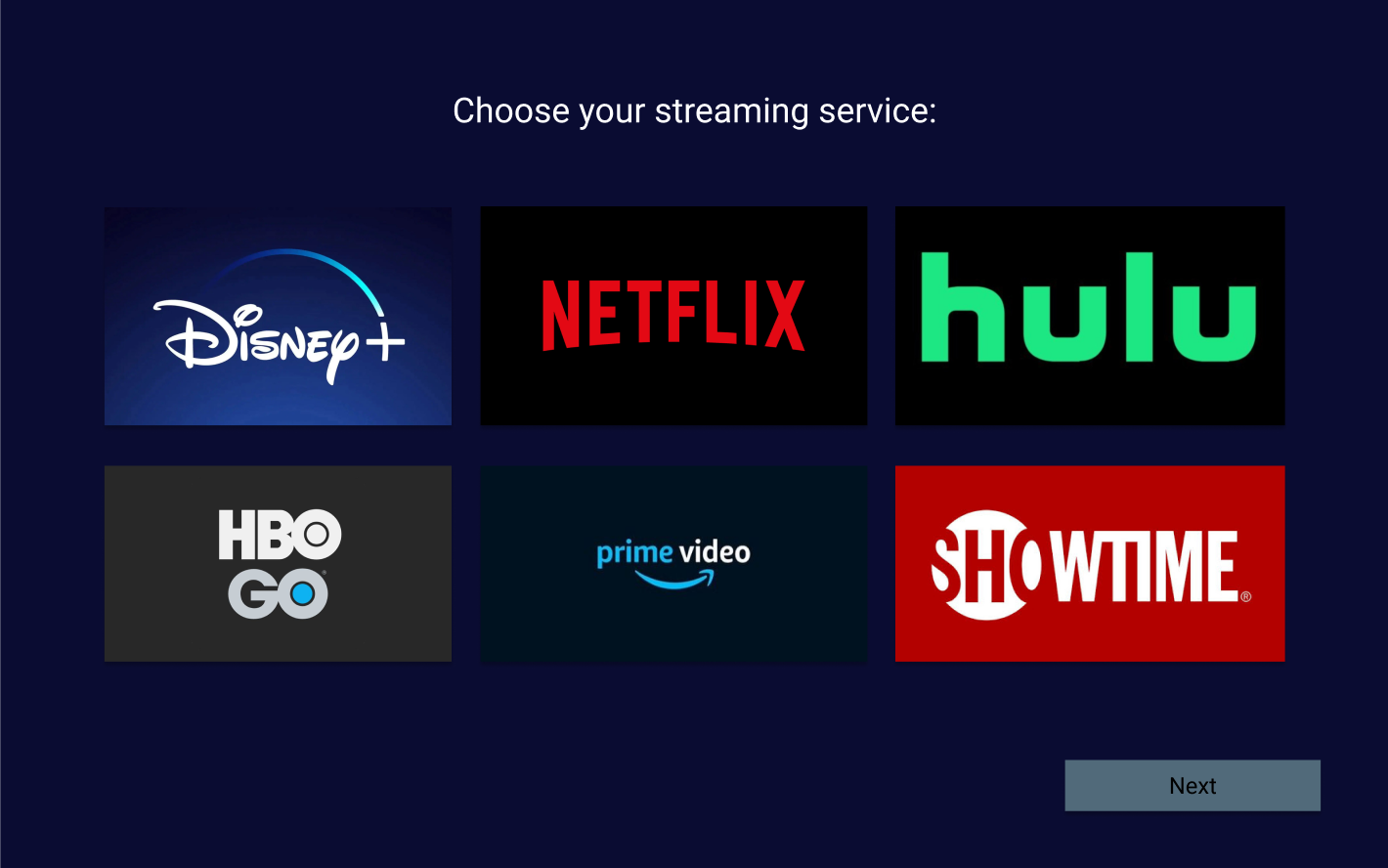

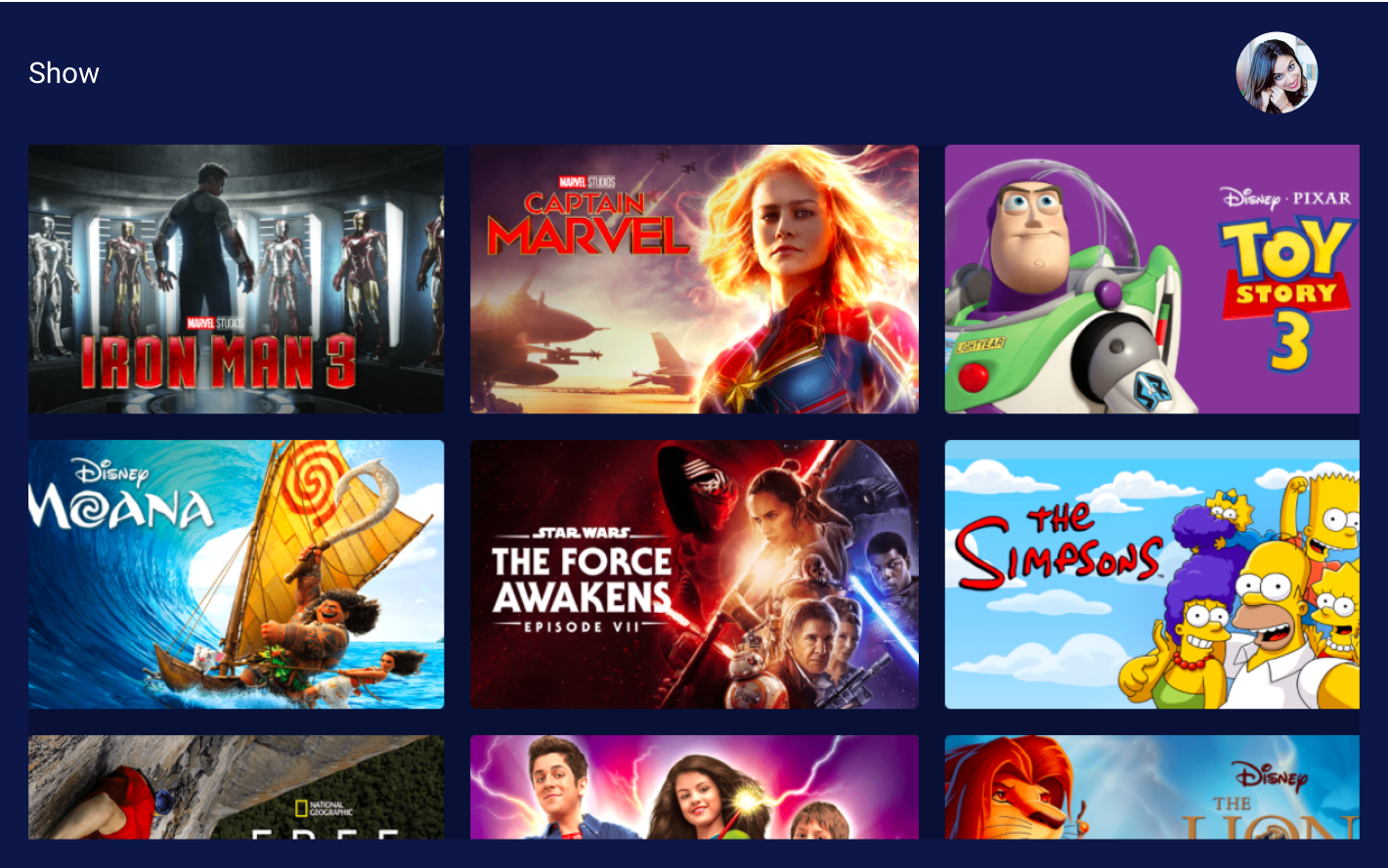
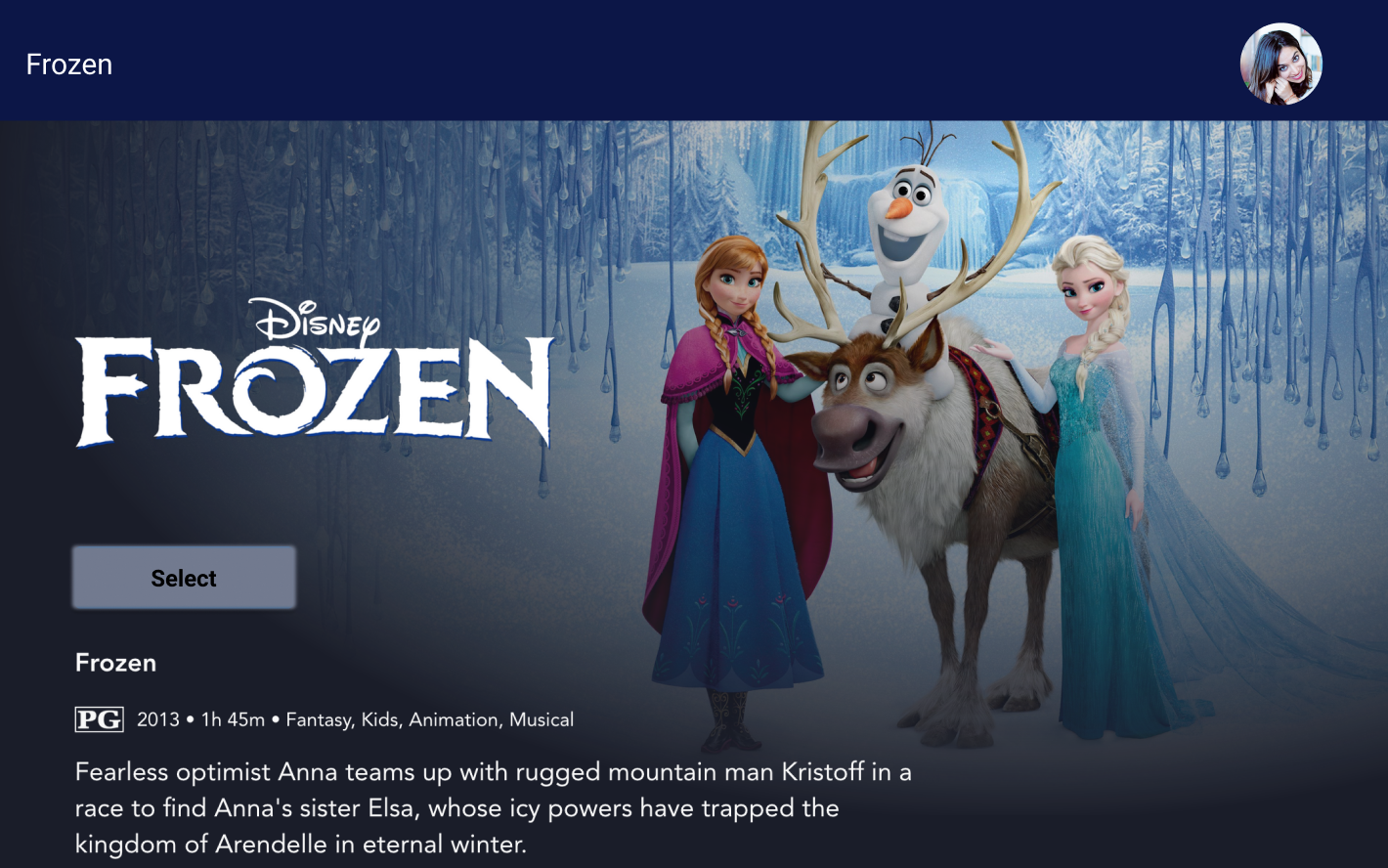
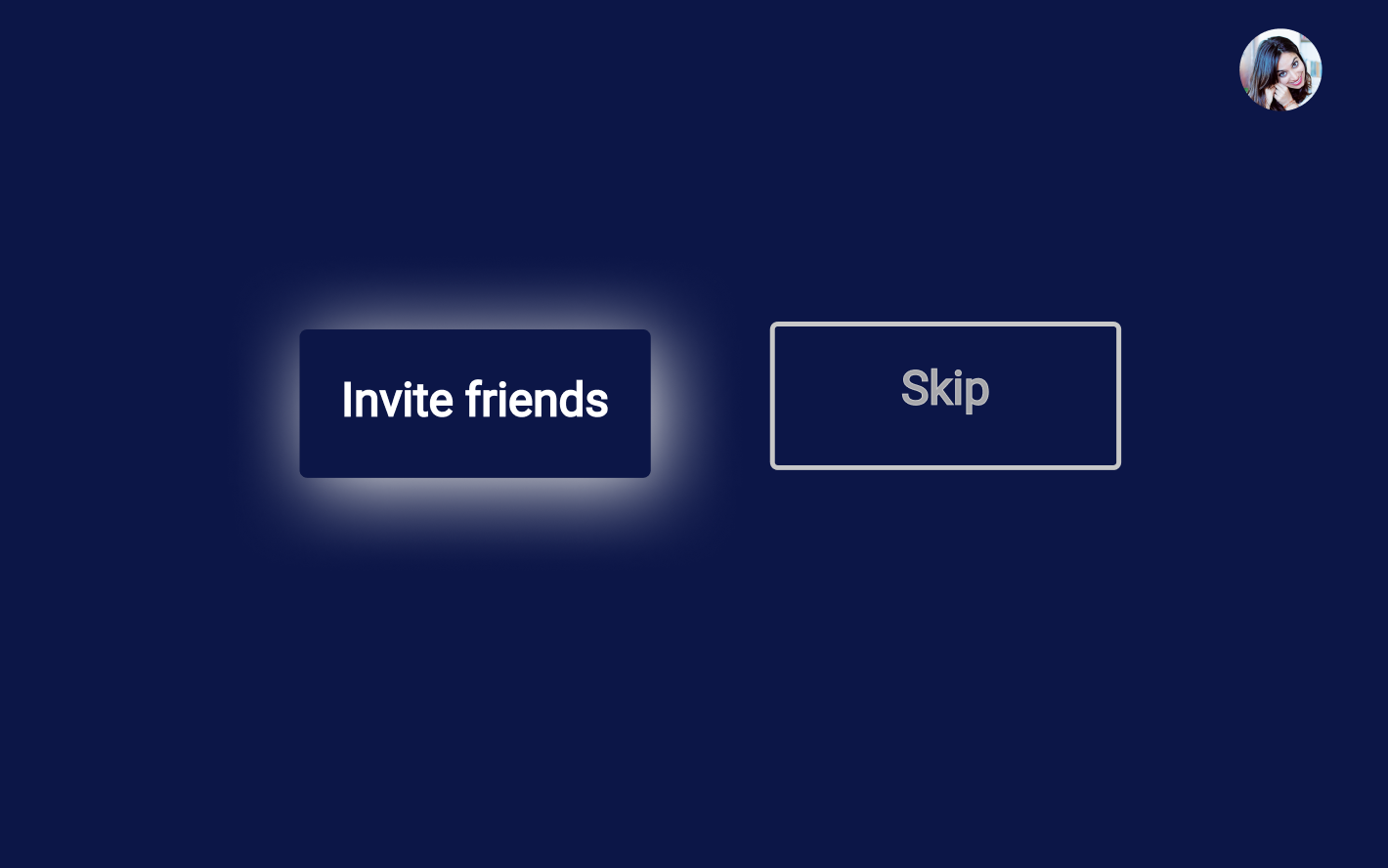
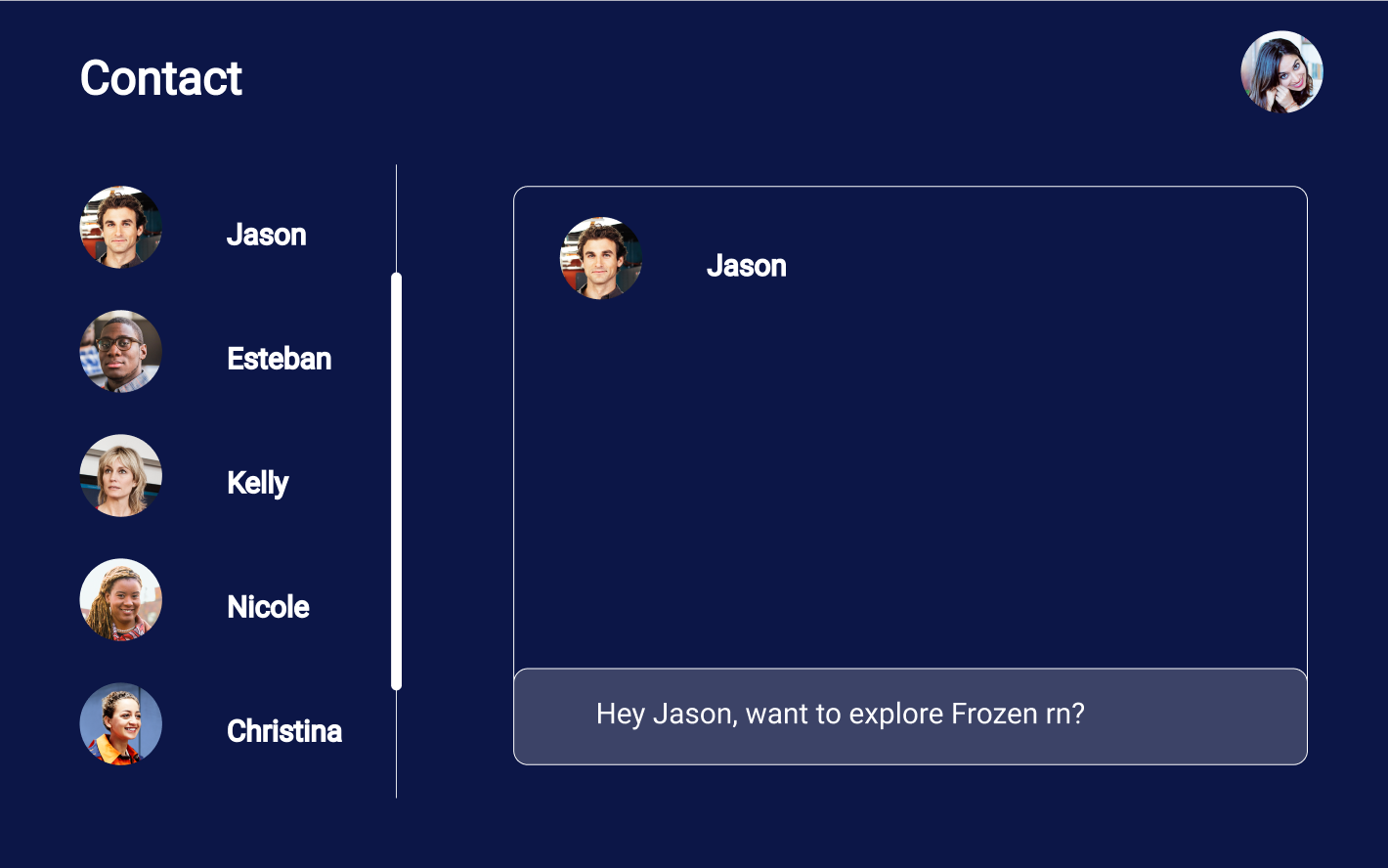
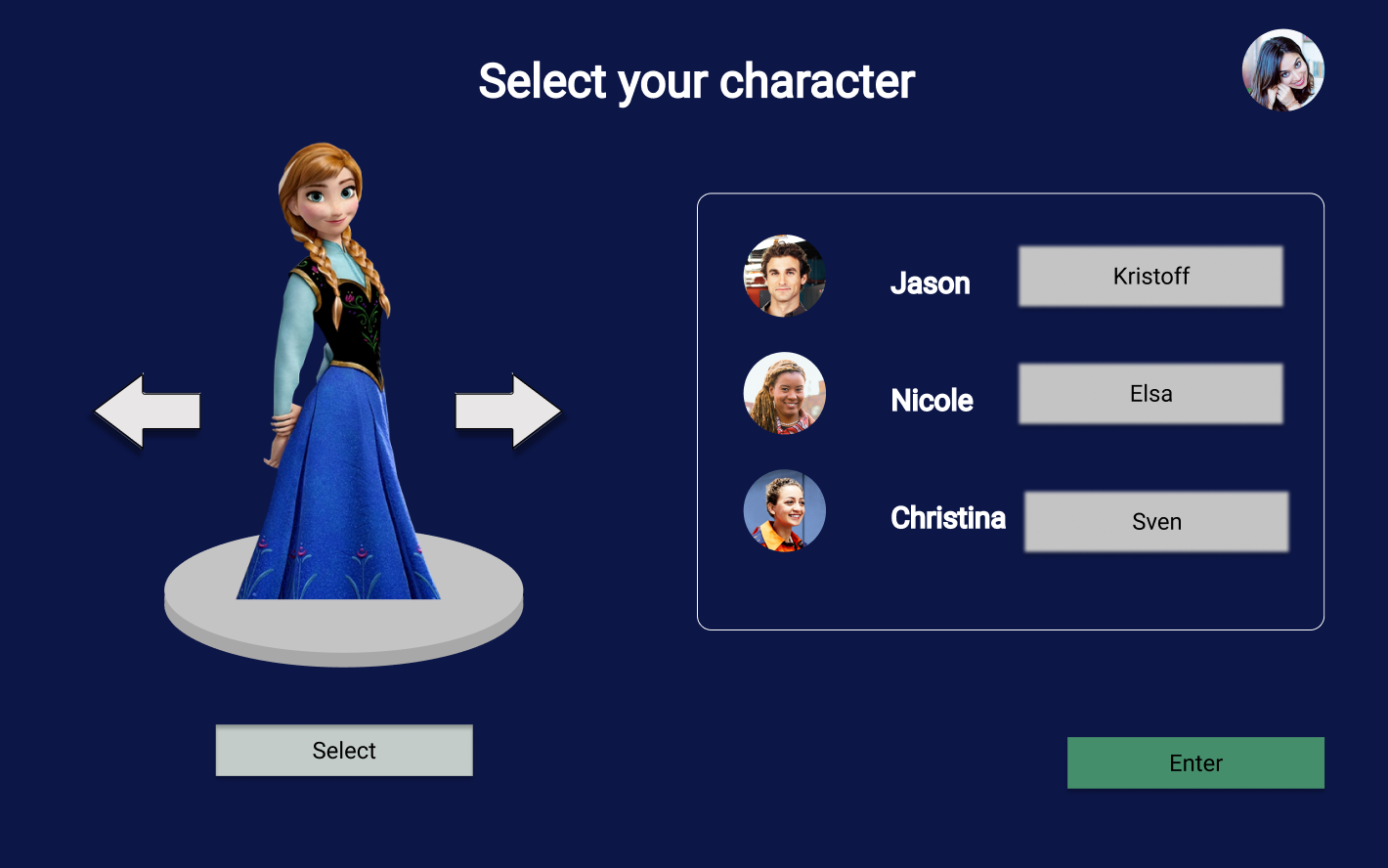
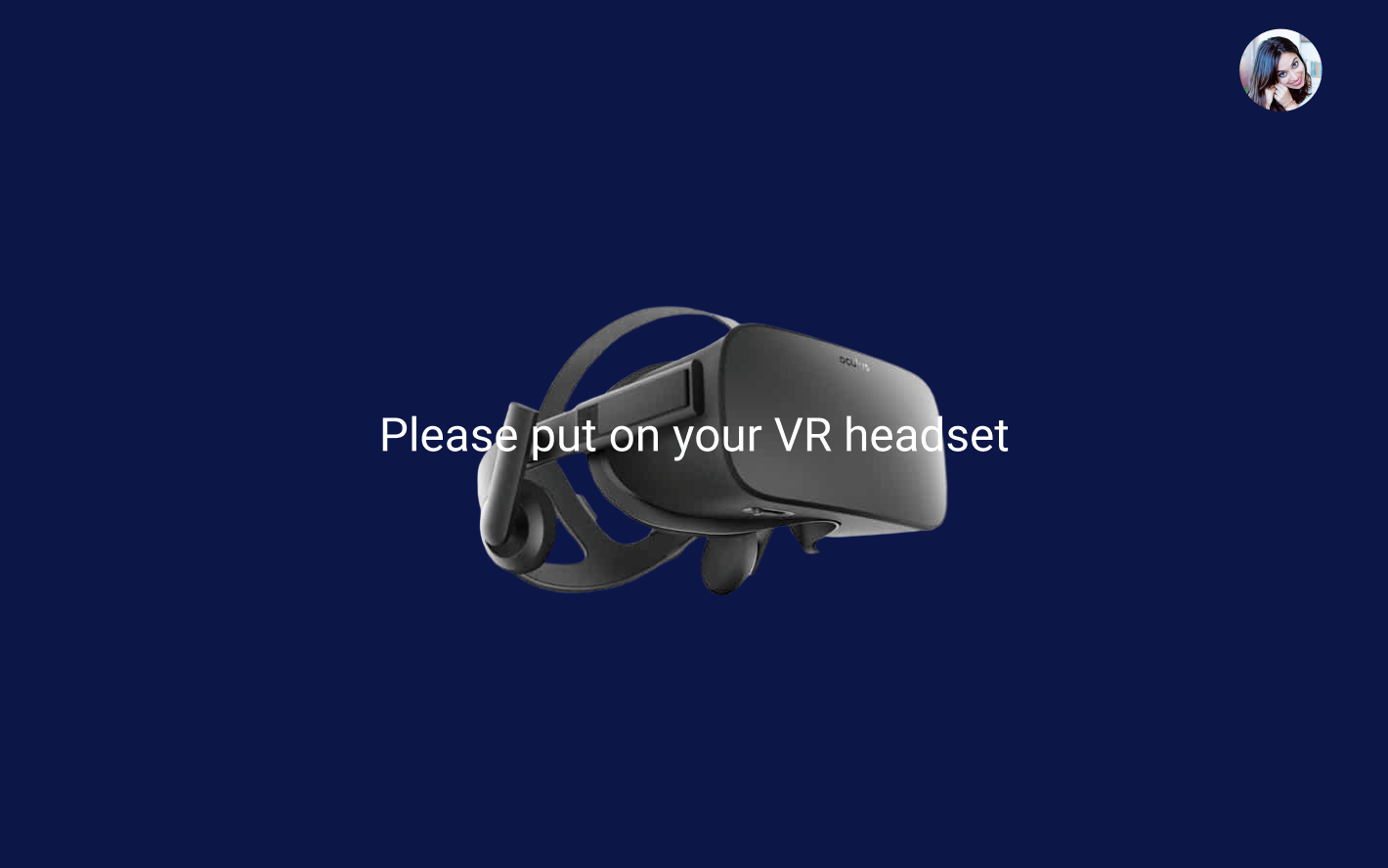
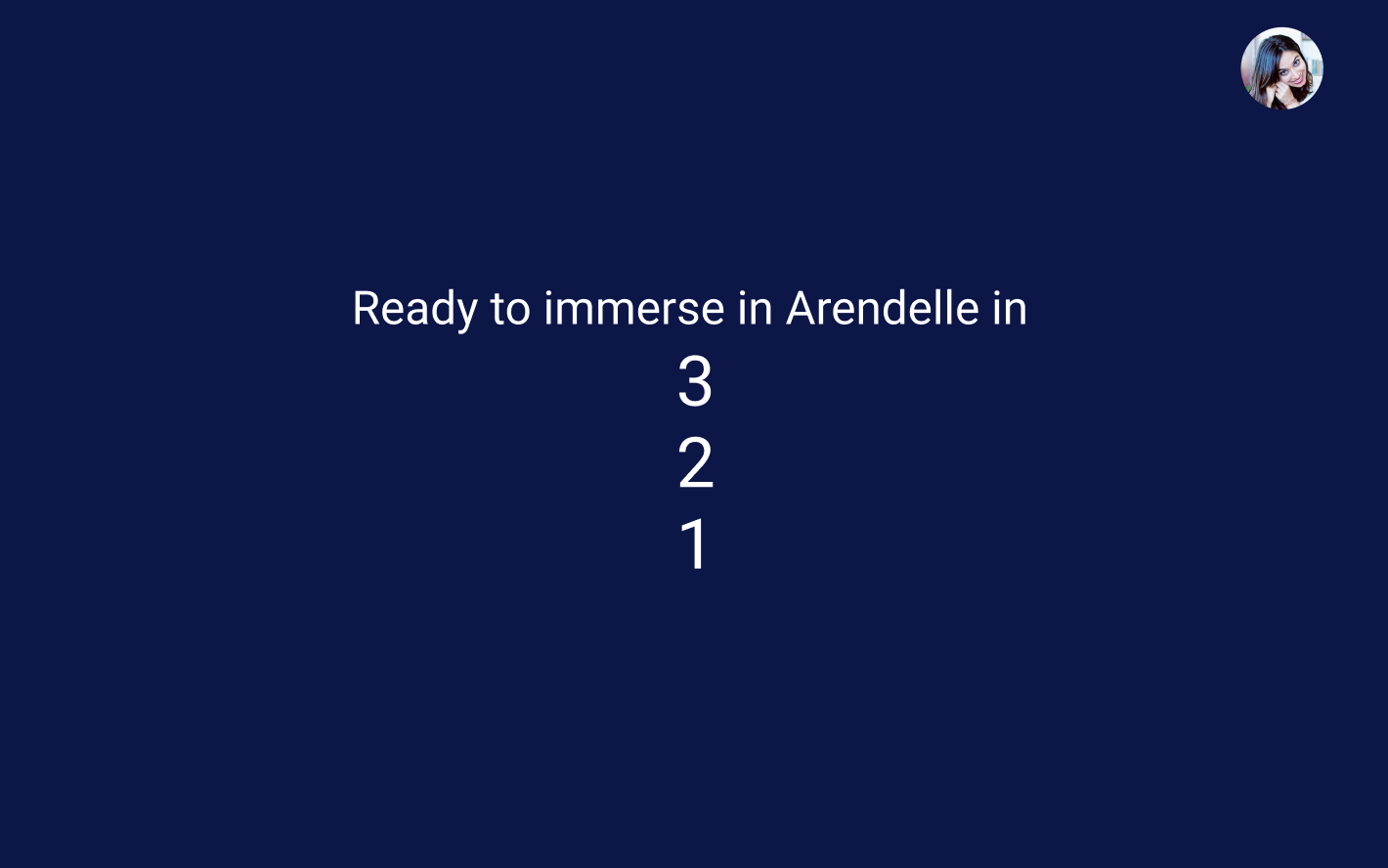
For onboarding, we designed the process with simplicity in mind to make it straightforward, so it goes from selecting a streaming platform to select a show to invitation, and to choose characters. We asked ourselves how we can add some flavors of interactions in this phase, and we thought that when selecting a character, it’s best if you can talk to others and see their selection simultaneously.
Final Solution: Selected TV Show/Movie

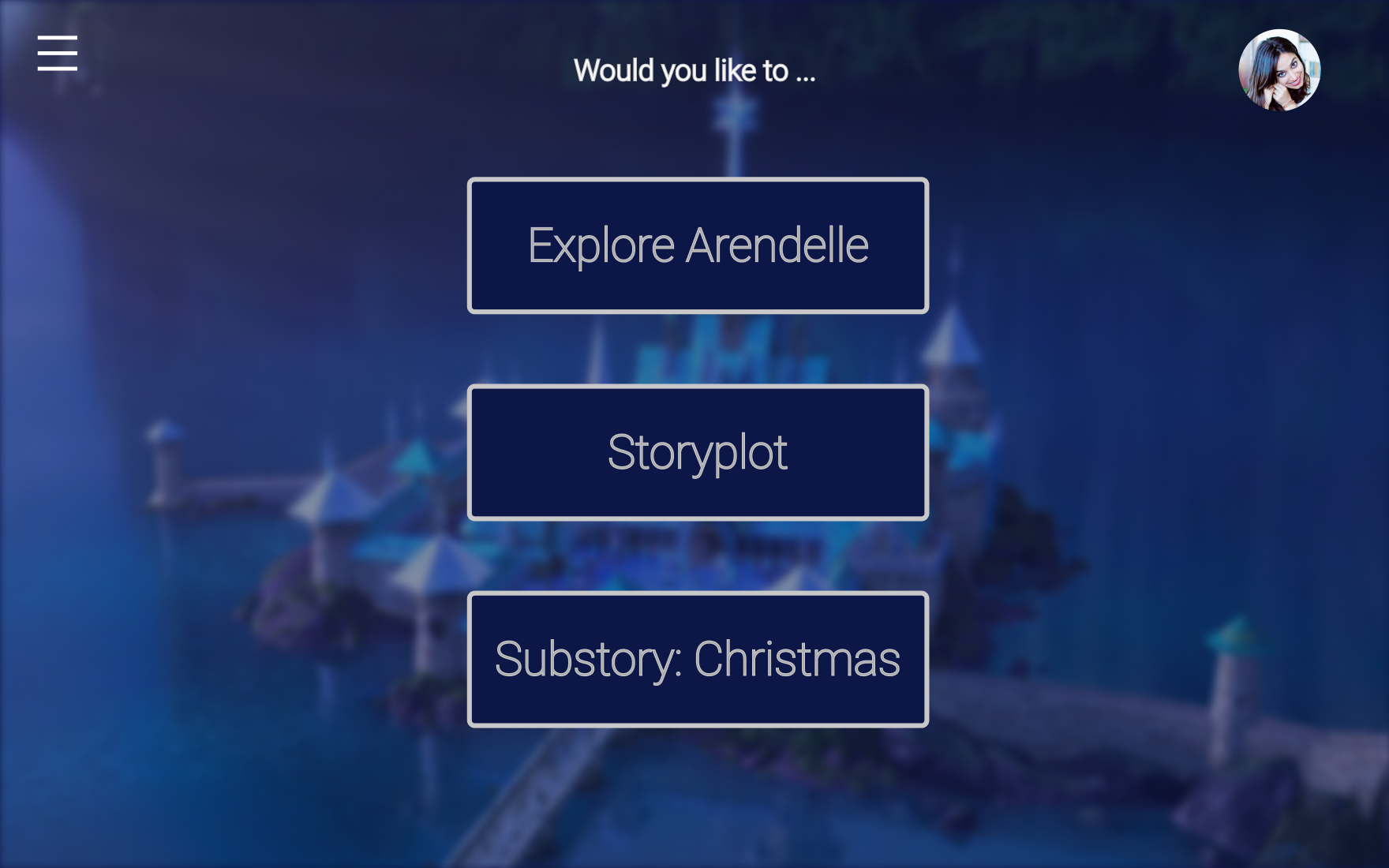
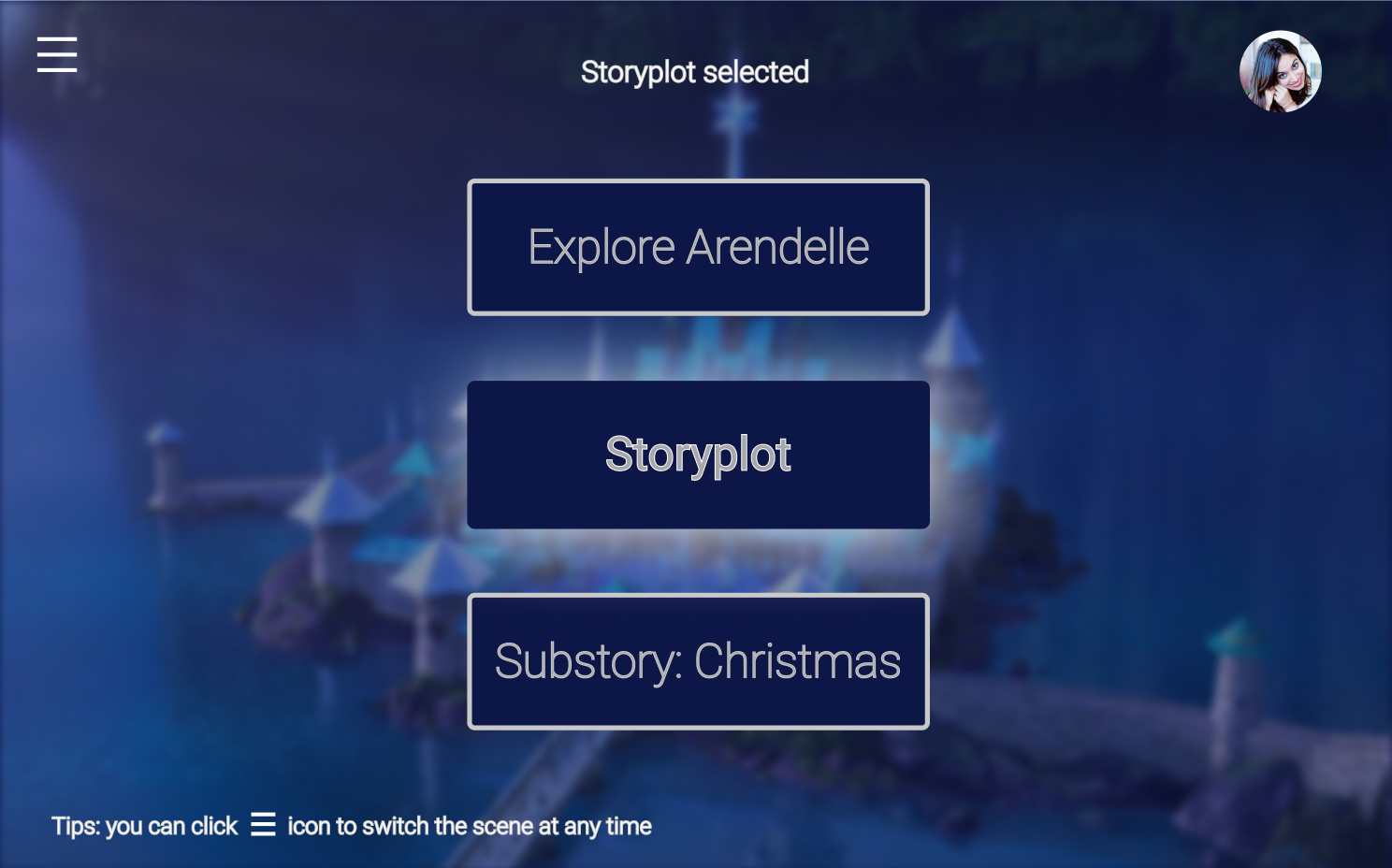


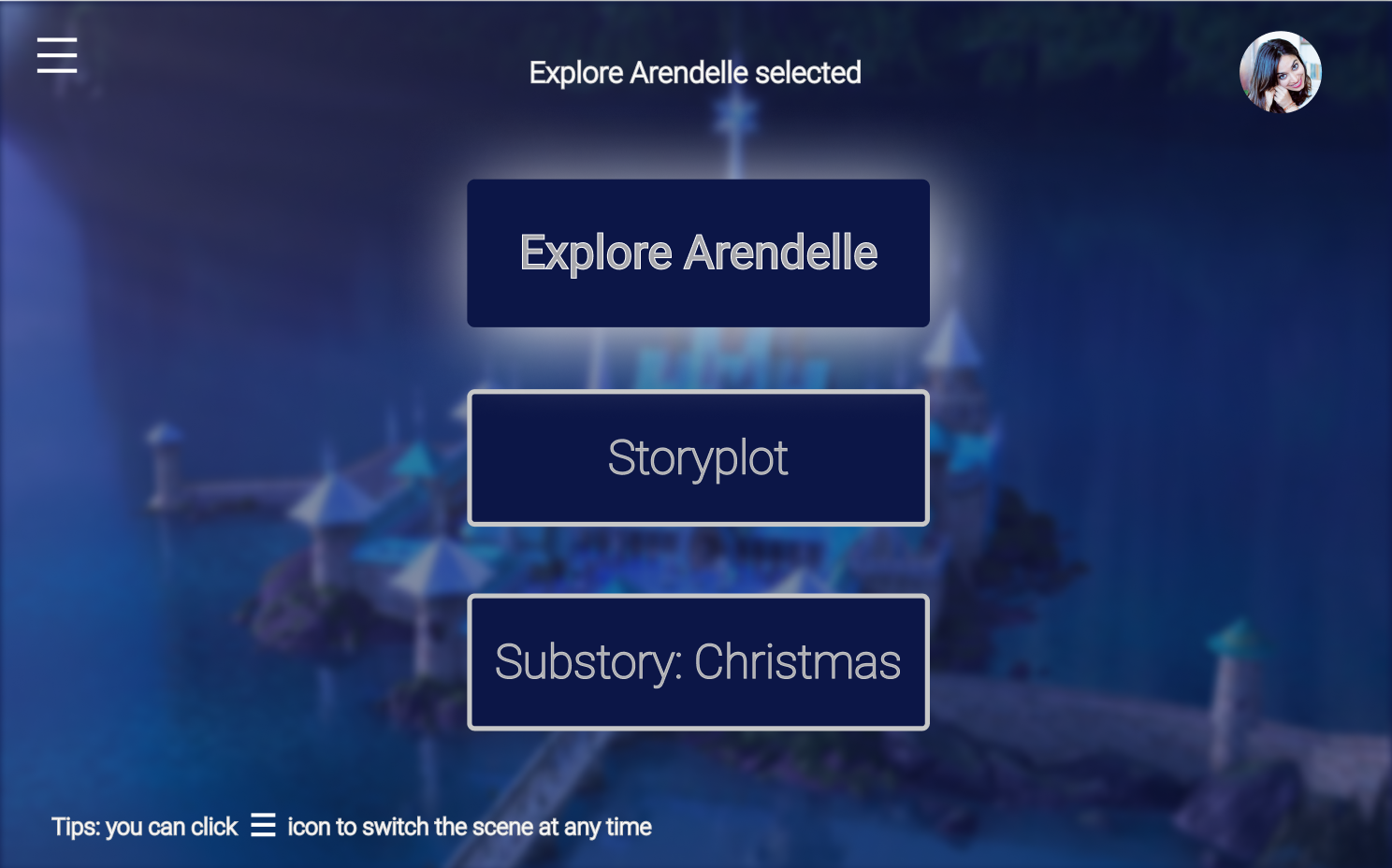
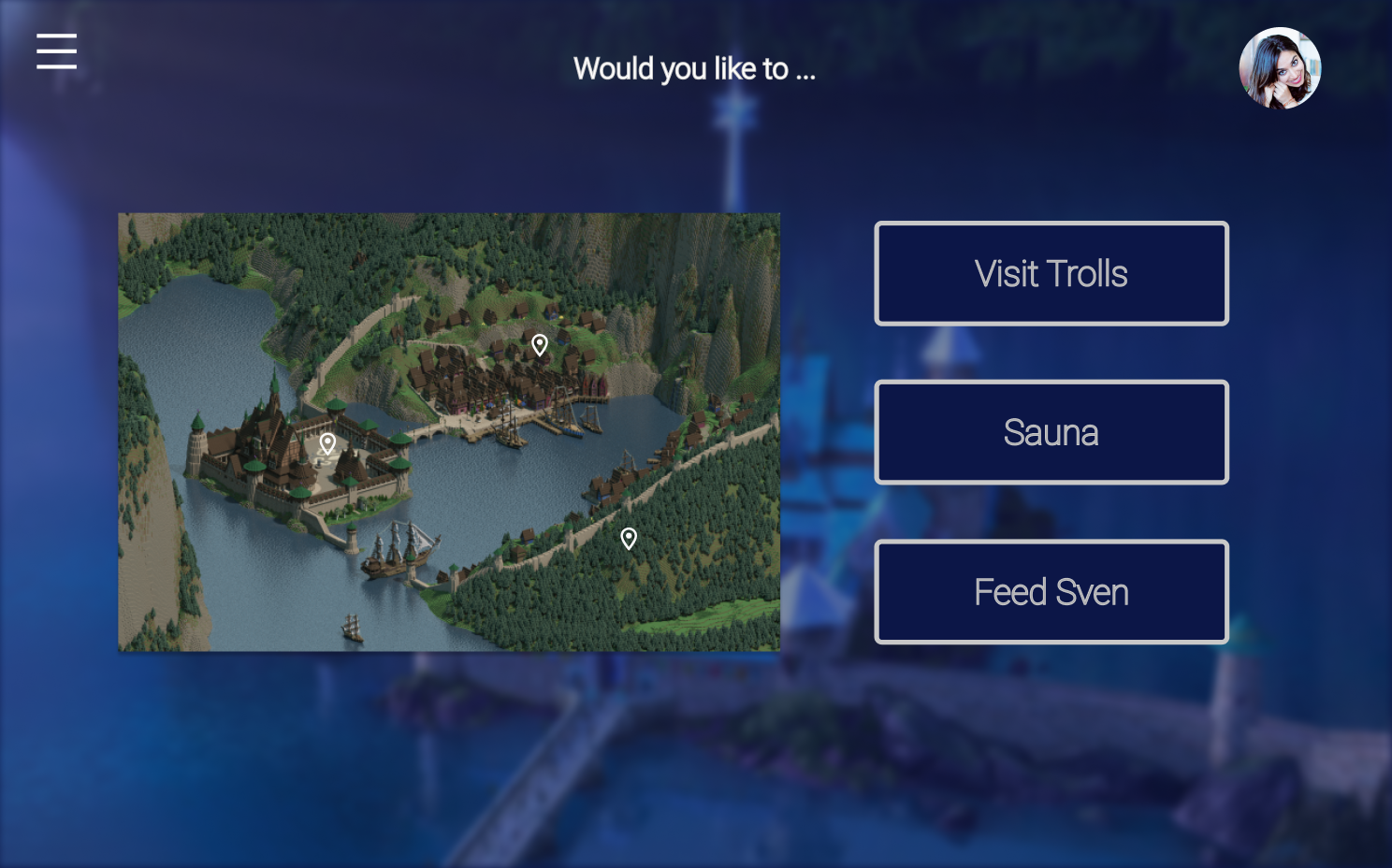
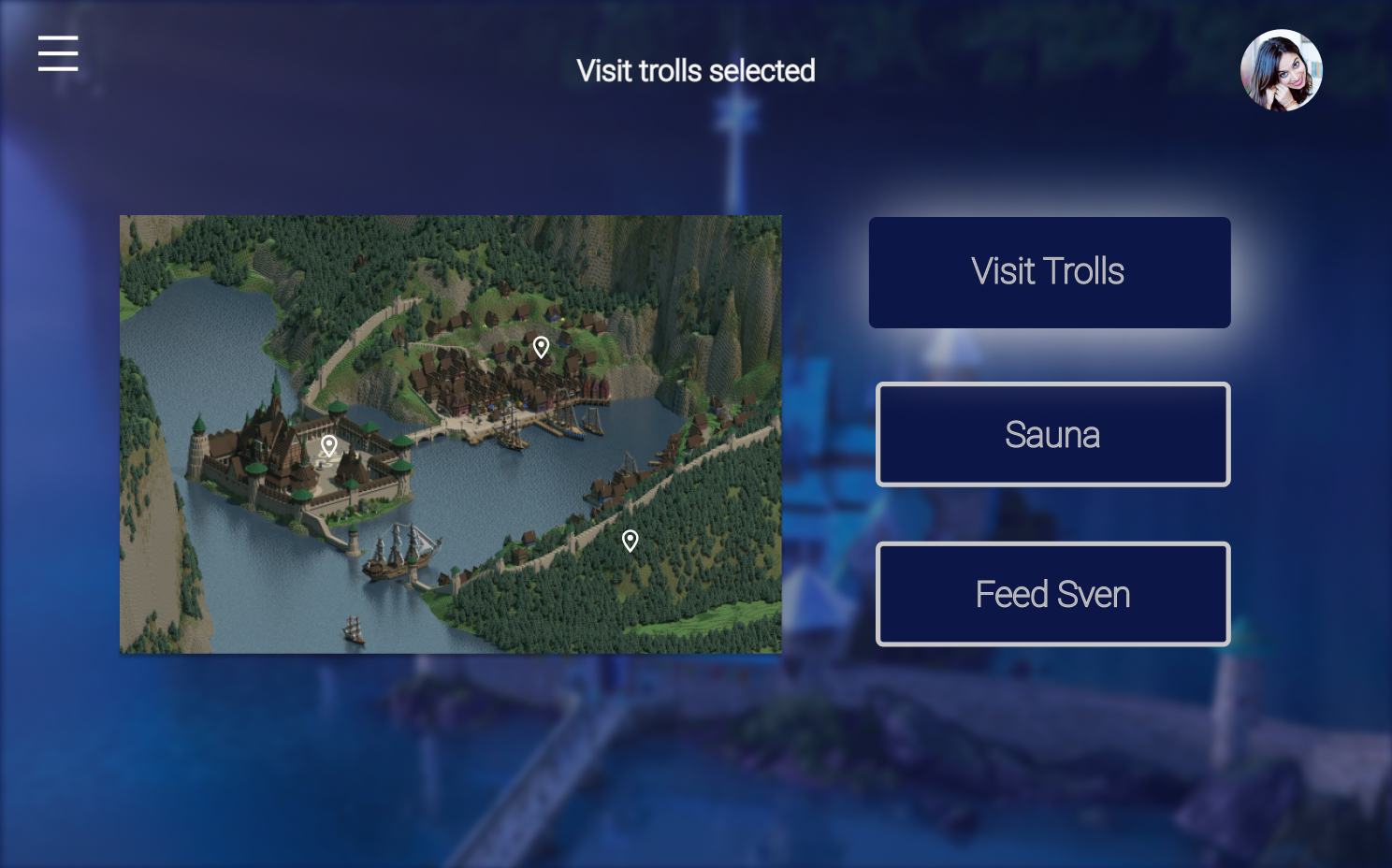
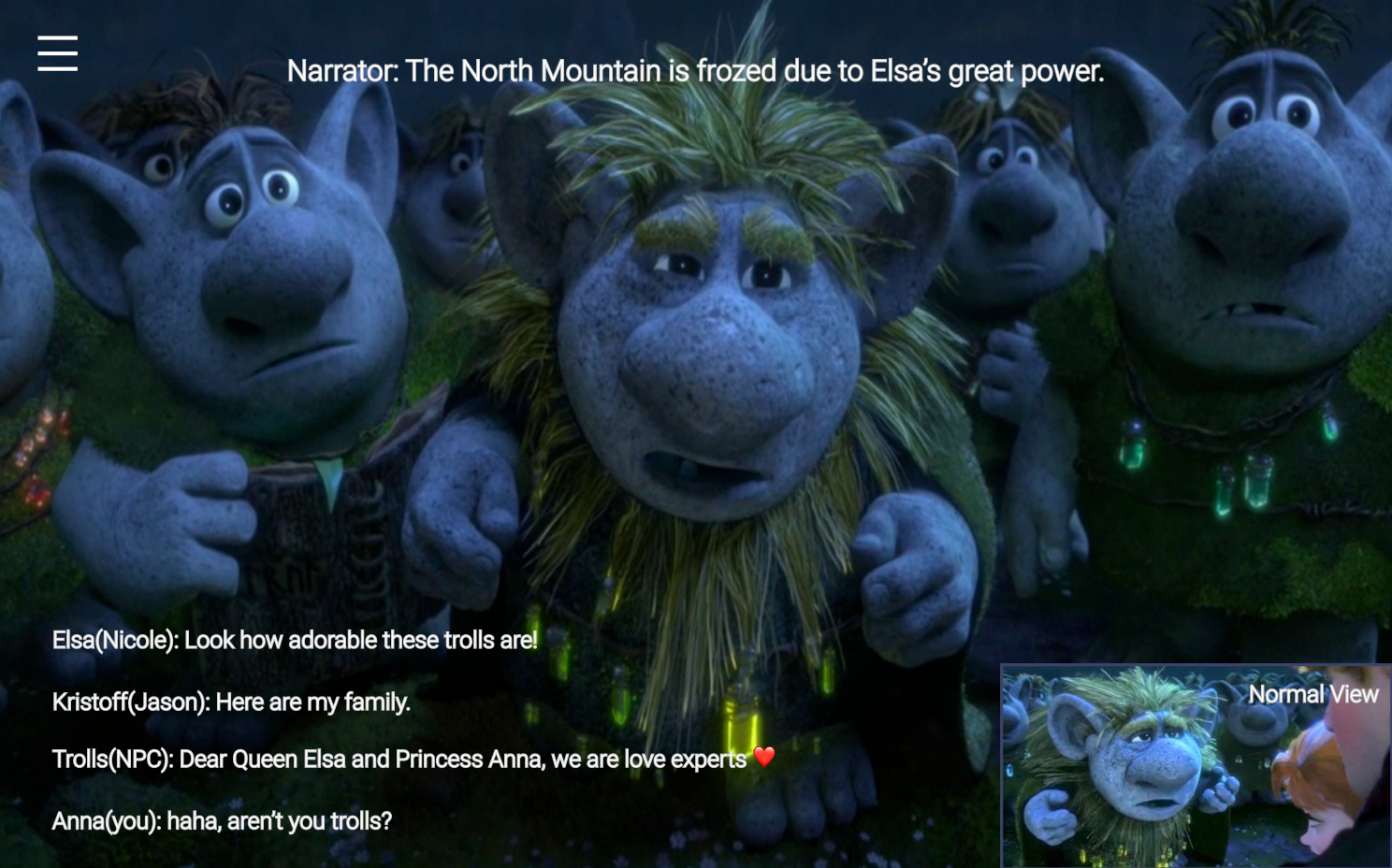
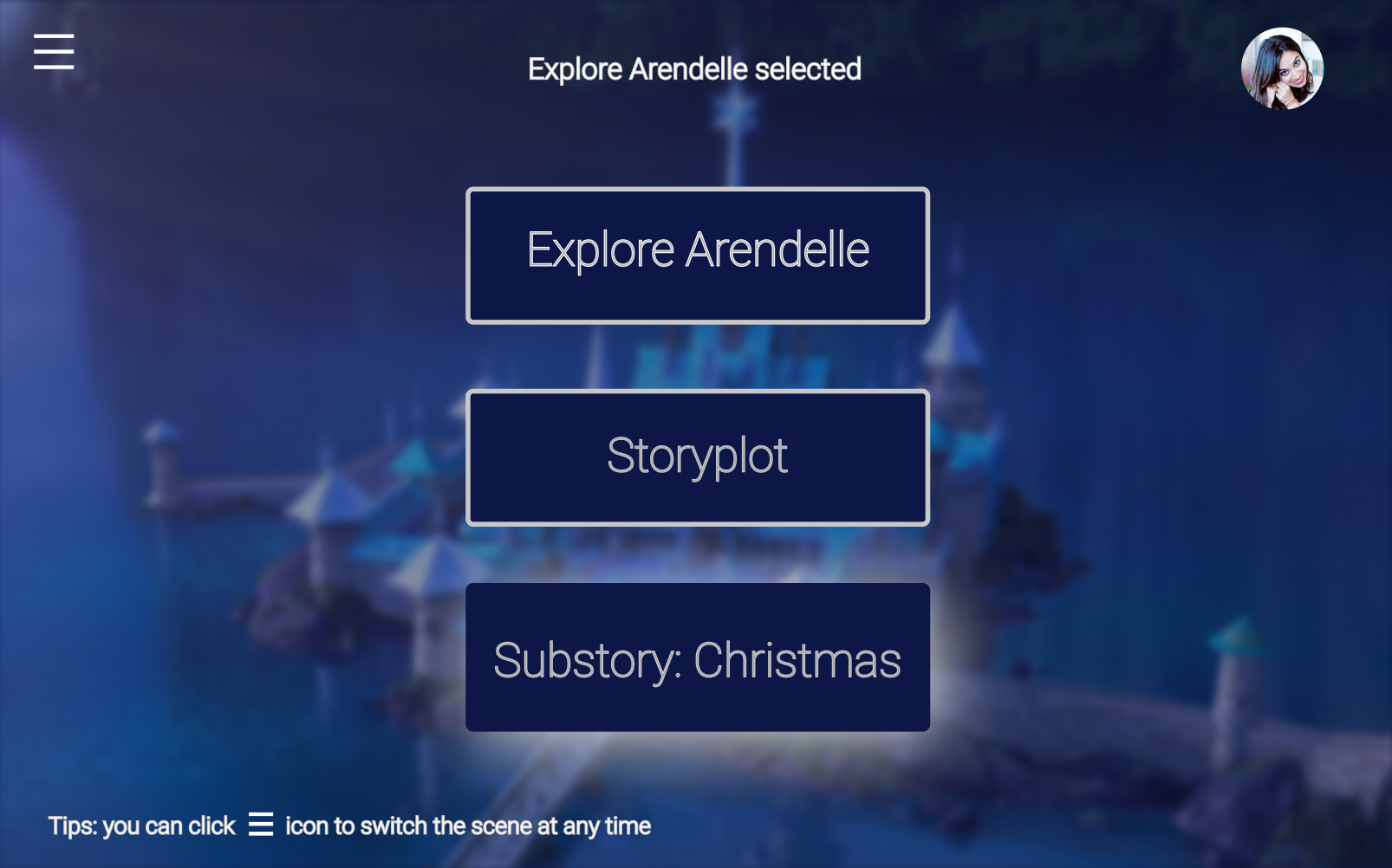
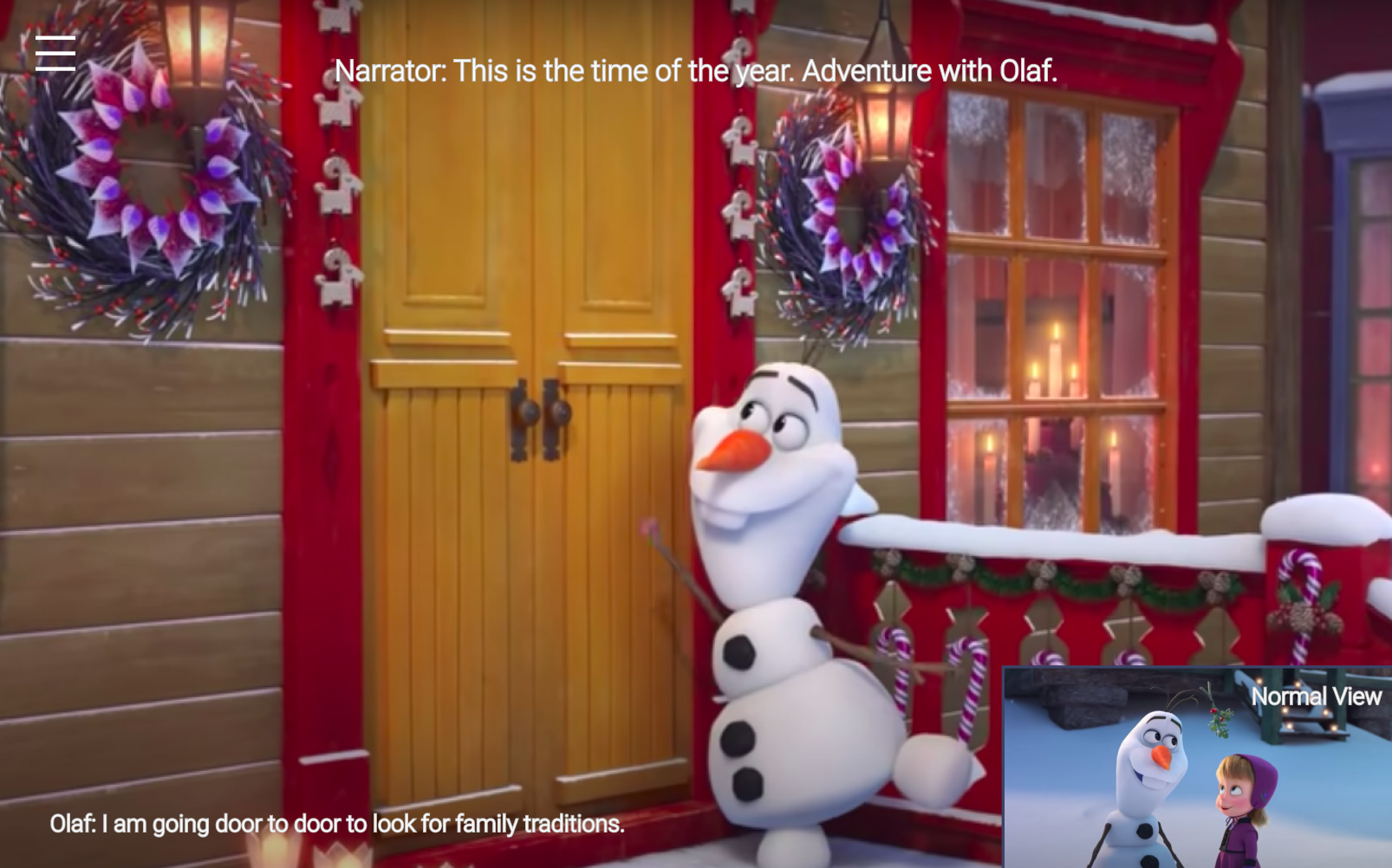
The part of the TV show includes the main story, side story and exploration: main story allows people to enjoy the original episode; substory is special edition of the story which is a subsidiary component to the main plot that people might not watch before to deliver a new story in case people have seen the show before, and new things can be the conversation starters; explore mode enables the users to roam around the world and it’s a great opportunity to chat with their friend in a relatively causal way like we usually do but with different background.
Want to read the full design process...
Click the button below to read our fully design process and explanation on our entire final prototype. In this documentation, you will get to read about how our research and ideation got us to our design and why we went with the solution that we produced.
